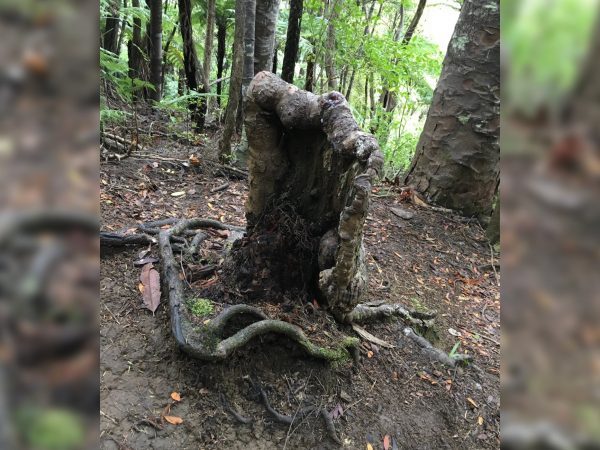
In a forest in New Zealand, a vampire clings to life.
Once a mighty kauri tree — a species of conifer that can grow up to 165 feet (50 meters) tall — the low, leafless stump looks like it should be long dead. But, as a new study published today (July 25) in the journal iScience reminds us, looks are only surface-deep.
Below the soil, the study authors wrote, the stump is part of a forest “superorganism” — a network of intertwined roots sharing resources across a community that could include dozens or hundreds of trees. By grafting its roots onto its neighbors’ roots, the kauri stump feeds at night on water and nutrients that other trees have collected during the day, staying alive thanks to their hard work.
“For the stump, the advantages are obvious — it would be dead without the grafts, because it doesn’t have any green tissue of its own,” study co-author Sebastian Leuzinger, an associate professor at the Auckland University of Technology in New Zealand, said in a statement. “But why would the green trees keep their grandpa tree alive on the forest floor while it doesn’t seem to provide anything for its host trees?”


